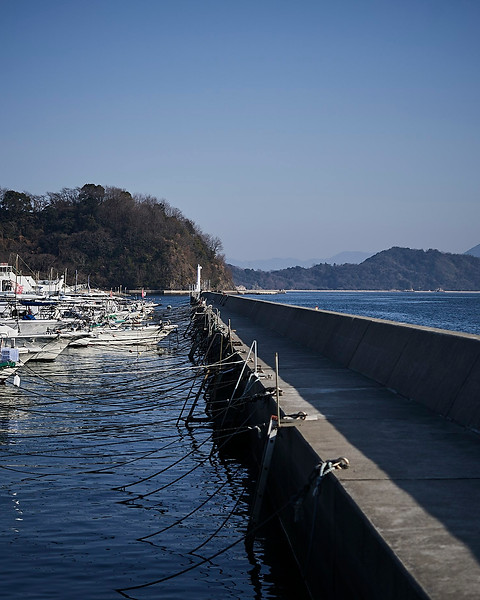top of page

Climate
The Seto Inland Sea is surrounded by land on all four sides, and its rich nutrients from the mountains promote the growth of plankton, which serves as food for marine life. The inland sea's unique geography causes significant tidal fluctuations, creating fast currents in the straits between the islands and nurturing well-toned fish. The area around Takehara has a particularly large tidal range in the Seto Inland Sea, but there are many islands, and the waves are calm, making the islands a cradle of fish and shellfish.
The seafood grown in this way has a deep taste like no other. "Umami" is necessary to taste such seafood deliciously. "Umami" brings out the taste of food and multiplies it by a synergistic effect.
We aim not only to complement the flavors of Takahama's bountiful seafood but also to make the dining experience delightful. That is why we devote ourselves to making Japanese sake rich in "Umami."




Water
Clean water springs from a corner of our Sakagura, 126 meters underground. This water is used in the sake-making process by Taketsuru Shuzo. Water accounts for about 80% of Japanese sake, and its quality significantly influences the sake's overall taste. The distinguishing feature of this water is its high concentration of chloride ions, which play a crucial role in imparting a rich and full-bodied flavor to the sake. It is thanks to this water that Taketsuru's Japanese sake possesses an astonishing depth of "Umami." Having the perfect water is vital in our making process.
This water also contains sodium ions, similar in concentration to the chloride ions. In the past, the area in front of the Taketsuru Shuzou was once a part of the sea. Hence, it is believed that this water is sourced from the underground passages through which seawater once flowed. Like our sake, this water is a product nurtured by the local environment.



History
The history of sake making in Takehara can be traced back to the early Edo period, but various regulations of the Hiroshima domain hinder its development.
When these regulations were abolished after the Meiji Restoration, Takehara, who was prosperous in the port industry during the Satsuma Rebellion in 1877, tried to open a sales channel for sake to Kyushu by ship, but also advanced. You will be aware of the difference in quality between the advanced areas and the upper areas.
"In order to make advanced sake that meets the demands of the times, we must unite the sake-makers."
In 1888, the sake-makers in Takehara formed the first sake making association in Hiroshima with the aim of improving their skills with the neighboring town of Akitsu, and it took more than 20 years to overcome this problem. The foundation of the current Japanese sake making in Hiroshima was laid here in the Geinan region centered on Takehara and Akitsu. The owner of Taketsuru Shuzou at that time also supported the sake making association as the core member.
Not only did they adopt the latest technologies from advanced regions, but they also introduced their own original innovations. Takehara became so prosperous in sake making that it was referred to as the "Number One Sake District West of Nada." Their unique innovations were ahead of the trends of that time.
We have pursued unprecedented endeavors, such as focusing on acidity in sake or producing "cloudy sake for warming," to add new charm and value to Japanese sake. We will continue to inherit the traditions of Takehara and strive to move forward.
By the way, although they were initially lagging behind advanced regions, the sake makers of Takehara did not settle for accepting that situation. Why did they try to catch up and surpass the advanced regions?
It is believed that the reason lies in the fact that many sake makers in Takehara were also engaged in salt production, which made them acutely aware of the importance of quality through competition with other regions in the salt industry. The swift establishment of the first sake makers’ association in Hiroshima Prefecture was also because there was already a shared awareness of the importance of quality among the sake makers.
While the salt production in Takehara has unfortunately declined, its spirit still lives on in sake making.

"Gyohan"
Takehara became a port of call for Kitamae-bune ships in 1672 due to the development of a westbound route by Zuiken Kawamura, and kelp was brought from Hokkaido. There is a local food born among the Takehara merchants who prospered in the salt industry.
Gyohan
Umami-rich seafood from the Seto Inland Sea and kelp from Hokkaido meet in history. Due to the time and effort it takes, only Taketsuru Shuzou, the predecessor of the salt industry, has inherited it with the decline of the salt industry. This is because it is the basis of the sake "Taketsuru".


* Gyohan was previously only available to those involved with Taketsuru Shuzou, but from March 2021 it is now available at the nearby NIPPONIA HOTEL TAKEHARA SALTWORKS TOWN.
bottom of page

